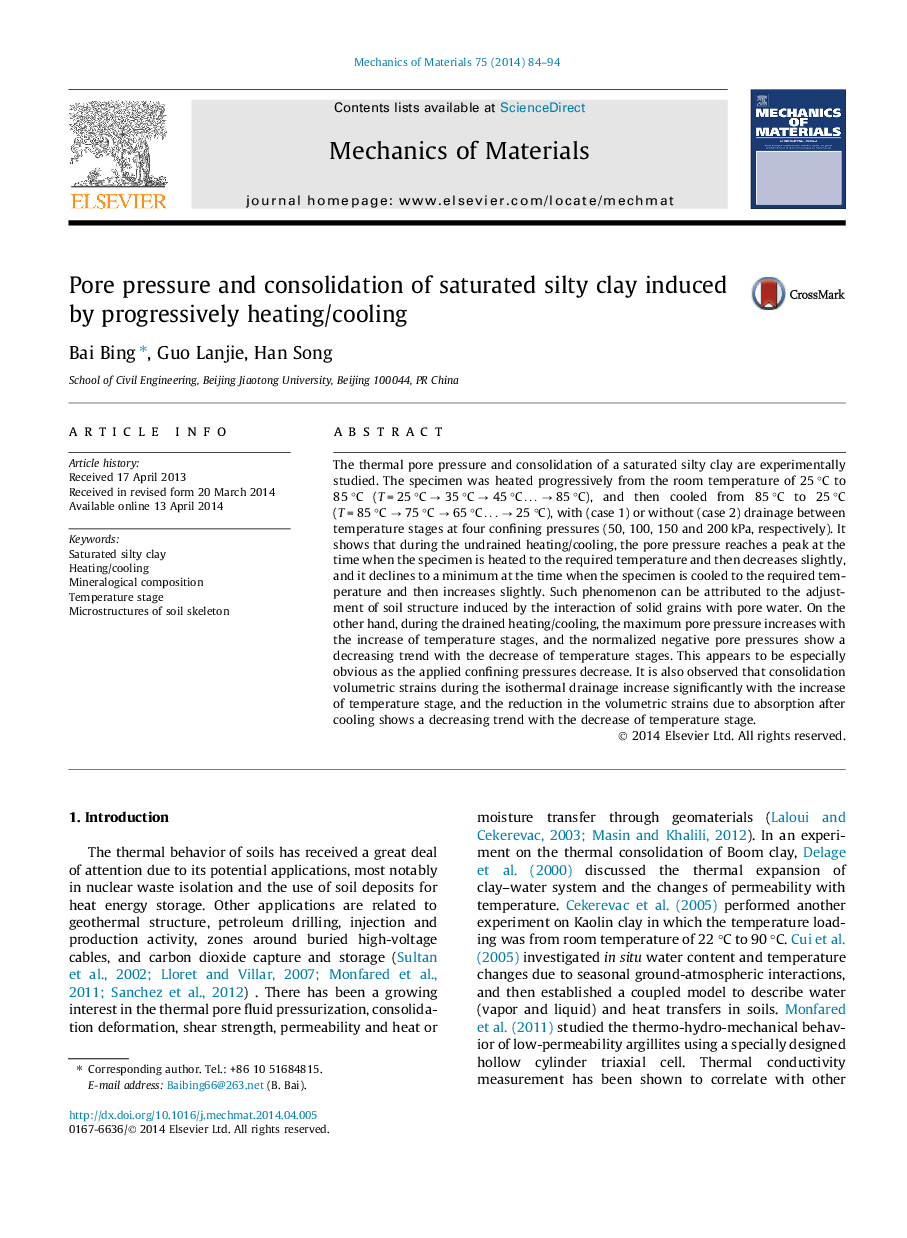| Article ID | Journal | Published Year | Pages | File Type |
|---|---|---|---|---|
| 802795 | Mechanics of Materials | 2014 | 11 Pages |
•Thermal pressurization and consolidation of saturated silty clay subjected to progressive heating–cooling cycle.•A special emphasis is given to the effect of undrained or drained conditions.•Temperature stages and heating histories are emphasized.
The thermal pore pressure and consolidation of a saturated silty clay are experimentally studied. The specimen was heated progressively from the room temperature of 25 °C to 85 °C (T = 25 °C → 35 °C → 45 °C … → 85 °C), and then cooled from 85 °C to 25 °C (T = 85 °C → 75 °C → 65 °C … → 25 °C), with (case 1) or without (case 2) drainage between temperature stages at four confining pressures (50, 100, 150 and 200 kPa, respectively). It shows that during the undrained heating/cooling, the pore pressure reaches a peak at the time when the specimen is heated to the required temperature and then decreases slightly, and it declines to a minimum at the time when the specimen is cooled to the required temperature and then increases slightly. Such phenomenon can be attributed to the adjustment of soil structure induced by the interaction of solid grains with pore water. On the other hand, during the drained heating/cooling, the maximum pore pressure increases with the increase of temperature stages, and the normalized negative pore pressures show a decreasing trend with the decrease of temperature stages. This appears to be especially obvious as the applied confining pressures decrease. It is also observed that consolidation volumetric strains during the isothermal drainage increase significantly with the increase of temperature stage, and the reduction in the volumetric strains due to absorption after cooling shows a decreasing trend with the decrease of temperature stage.
